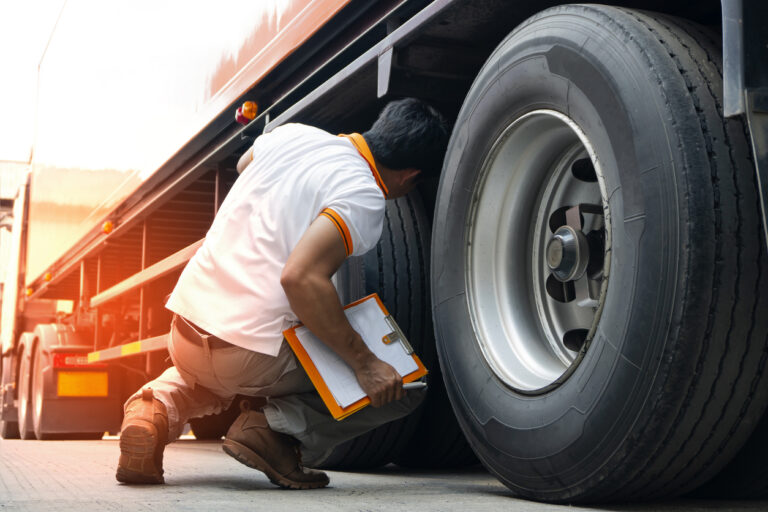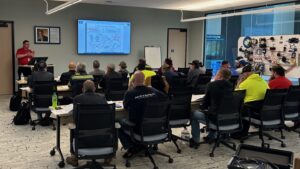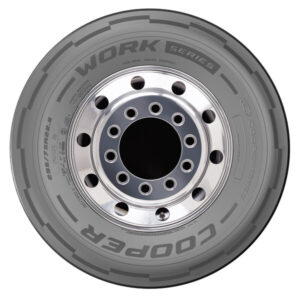Brake safety week will be here before you know it! The Commercial Vehicle Training Alliance (CVSA) has scheduled this year’s event for Aug. 25-31.
During this inspection blitz, safety checks — including a large number of Level IV inspections — will be conducted on large trucks and buses across the U.S., Canada and Mexico.
Brake Safety Week is one of two annual CVSA events that focus on commercial motor vehicles’ (CMVs) brake systems.
Brake Safety Day (which is never announced in advance) was conducted on June 10 this year. During that event, inspectors placed 570 vehicles — that’s 11.8% of those inspected — out of service for critical inspection item violations. The most common violation was 20% or more of brake devices out of adjustment. An 18-wheeler has 10 wheel-ends, so it only takes two for an OOS condition. Other OOS violations included worn brake lines or hoses, air leaks, broken brake drums, defective low-air warning devices and more.
Brake Safety Week, unlike the one-day surprise event, is announced early, giving truck owners, fleet managers and drivers plenty of time to prepare.
This year’s focus areas are brake linings and pads
During this year’s week-long brake safety event, inspectors will pay extra attention to brake linings and pads. Linings that show excessive wear or that are loose, broken or contaminated with a substance (such as oil from leaking wheel seals) will be cause for a vehicle being placed out of service (OOS).
Although not an area of focus, inspectors will also measure brake adjustment and the make note of the condition of parts and air lines, too. In-cab checks may be conducted to determine the condition of low-air warnings and the operation of tractor and trailer protection valves.
Some jurisdictions are equipped with performance-based brake testers, machines that measure the braking forces at each wheel end, for an axle or for the entire vehicle. While these devices can’t identify
the particular brake part responsible for a problem, they can identify when brakes don’t have the stopping power to safely bring the vehicle to a halt.
The condition of brake linings is an issue for some drivers
Brake linings may be hidden by inspection plates and can be difficult for drivers to access. Many drivers don’t know how to measure push-rod travel, so they leave that task to the technicians in the maintenance department. When an automatic slack adjuster (the device that pushes the push rod) is out of adjustment, manufacturers advise against trying to adjust it. The correct action is to have it replaced, something drivers aren’t equipped to do on the road.
In most applications, slack adjusters should appear to be at about the same angle, so if one adjuster stands out at a different angle than the rest, there may be a problem on that wheel end.
Other brake components, however, aren’t difficult to inspect.
Drivers can check air lines, including lines from tractor to trailer and those hanging under the trailer, for damage and leaks.
In-cab checks for low air pressure warnings and protection valve operation should be performed regularly. With the truck turned off and the windows down, even small air leaks can be heard.
It takes a little effort, but a good look under the truck to make sure everything is connected and nothing damaged should also be done regularly.
If the steering pulls to one side or the other when brakes are applied, that’s an indication the brakes are out of adjustment on at least one wheel. That’s a dangerous condition, and an automatic OOS violation if found at an inspection.
Pre-inspect your vehicle ahead of time
It’s a good idea to have the brakes inspected shortly before the CVSA event (or whenever the driver isn’t sure they are in proper working condition). Some carriers routinely perform inspections when the truck is in the shop for maintenance, but some utilize vendor services while the truck is on the road.
Carriers that utilize a lot of trailer pools to create drop-and-hook opportunities for drivers sometimes don’t get trailers in for proper inspection as often as necessary. That’s why pre-trip inspections by the driver are critical to keeping them in good condition.
Unfortunately, the conditions at pickup aren’t always good for inspections. Finding and hooking up to a loaded trailer in a muddy lot at midnight is difficult enough. The trailer may need to be moved to a better location, and a flashlight will be needed. No matter the circumstance, hauling the trailer to your destination without inspecting isn’t an acceptable way to operate.
What is the CVSA and what do they do?
Drivers sometimes assume that the CVSA is a law-enforcement group that exists to make their jobs more difficult. This is not exactly the case.
While law enforcement groups are a part of CVSA, so are manufacturers of vehicles and vehicle components, as well as carriers. The CVSA is a partnership of industry groups that conducts regular meetings to decide on inspection criteria and develop inspection procedures. Inspectors can’t simply decide they don’t like the way something looks; they must follow detailed guidance developed by CVSA.
Check out these online resources
The CVSA provides a great deal of information on its website, including downloadable guides for inspection types and procedures and guidance for drivers to pass inspections. For example, drivers can download a flyer with detailed information about checking brake shoes, pads, drums and rotors here. Another document that provides brake adjustment information can be viewed and downloaded here. A flyer explaining how the performance-based brake tester works can be found here.
A large part of the CVSA’s mission is education and outreach. This includes educating drivers on how inspections are conducted and how to pass vehicle inspections. It also includes accumulating data that is used to help manufacturers make better products and carriers develop better maintenance and safety processes. It’s a team effort designed to keep everyone safer.
Although being inspected by a uniformed law enforcement official can be inconvenient — and sometimes intimidating — it doesn’t have to be. Inspectors and drivers are both trying to do their part to save lives. Many inspectors are glad to explain what they are looking for and what constitutes a violation. Being impatient or confrontational only adds stress to everyone’s day.
Take advantage of the information available and be prepared for Brake Safety Week — and every week.
Cliff Abbott is an experienced commercial vehicle driver and owner-operator who still holds a CDL in his home state of Alabama. In nearly 40 years in trucking, he’s been an instructor and trainer and has managed safety and recruiting operations for several carriers. Having never lost his love of the road, Cliff has written a book and hundreds of songs and has been writing for The Trucker for more than a decade.








